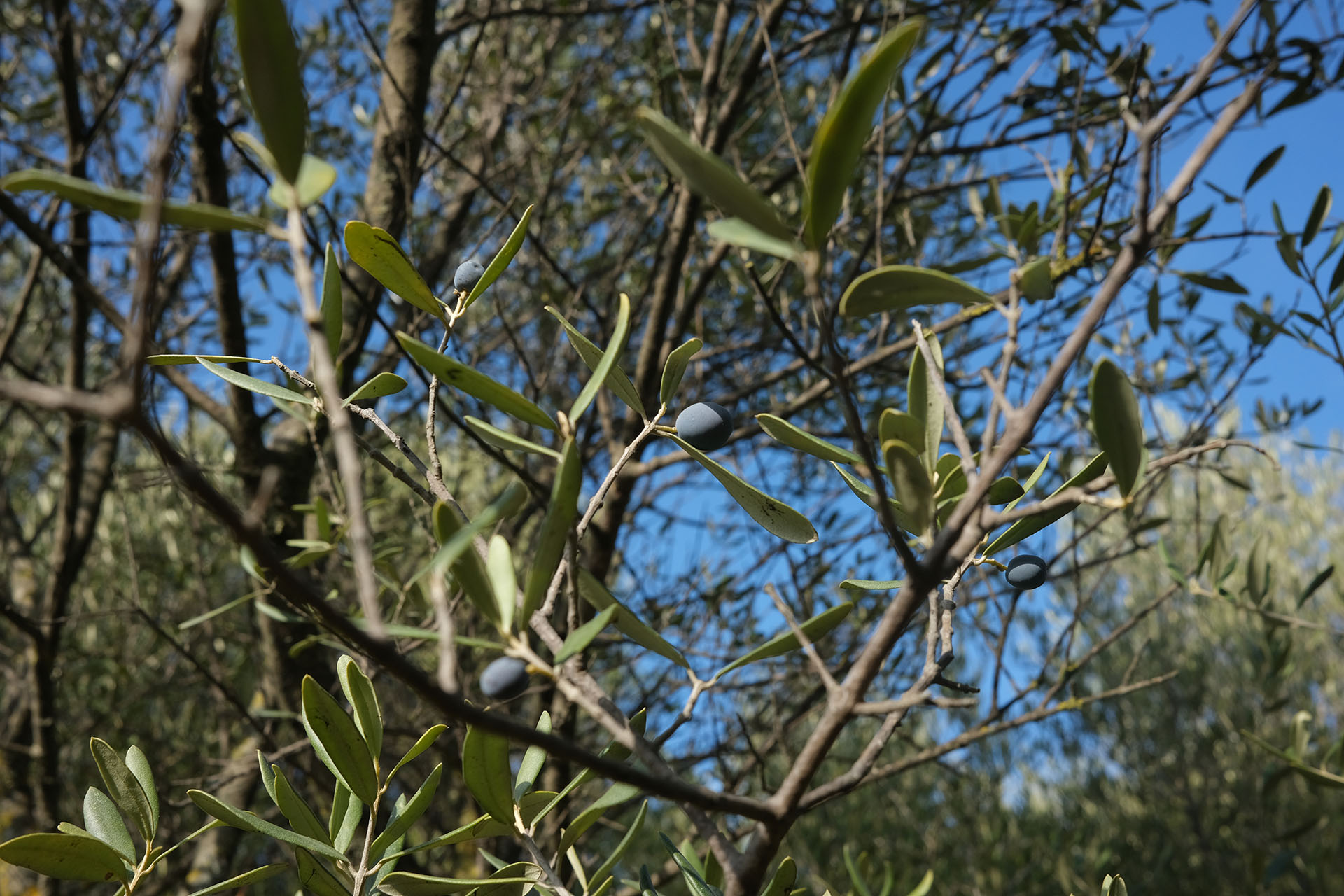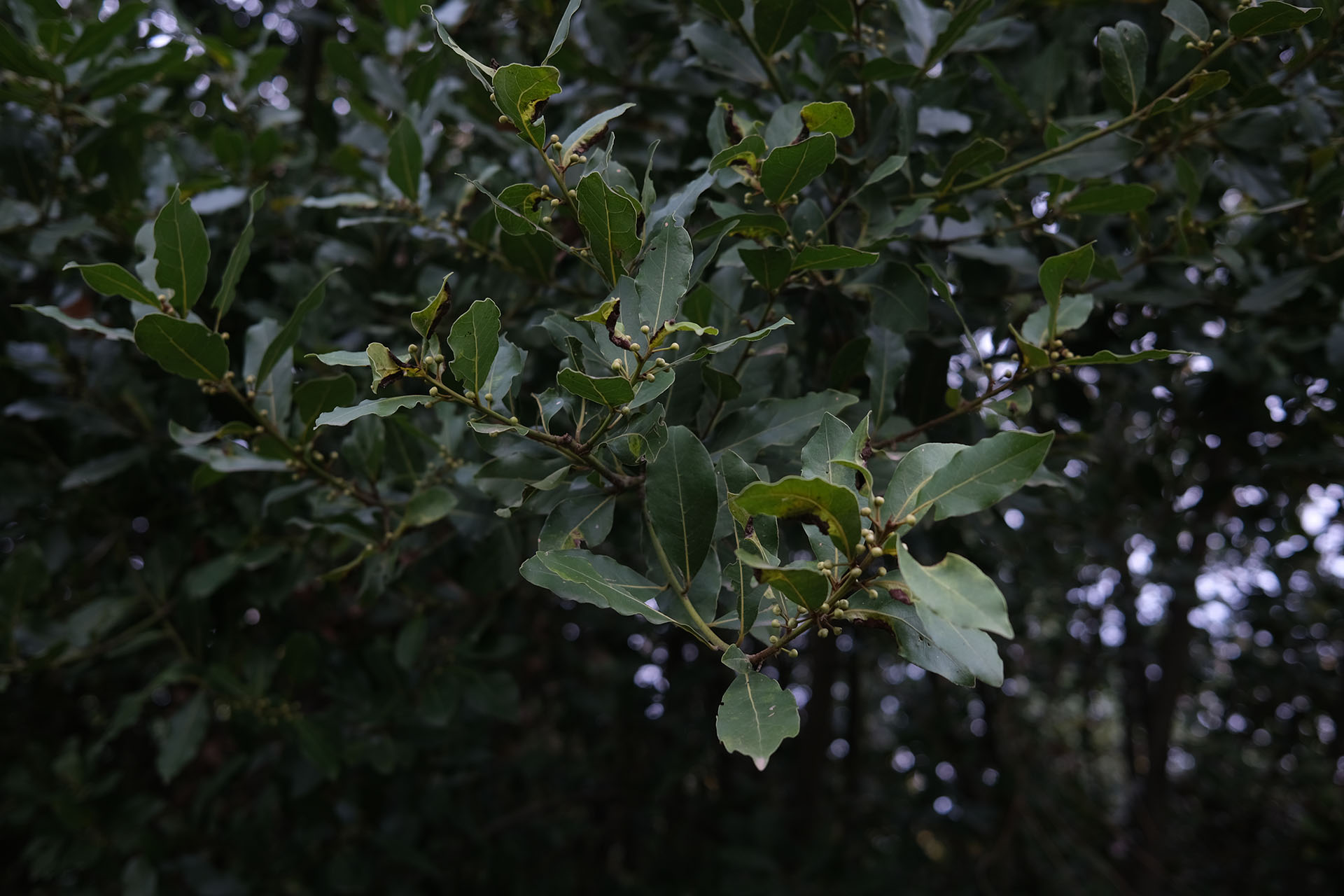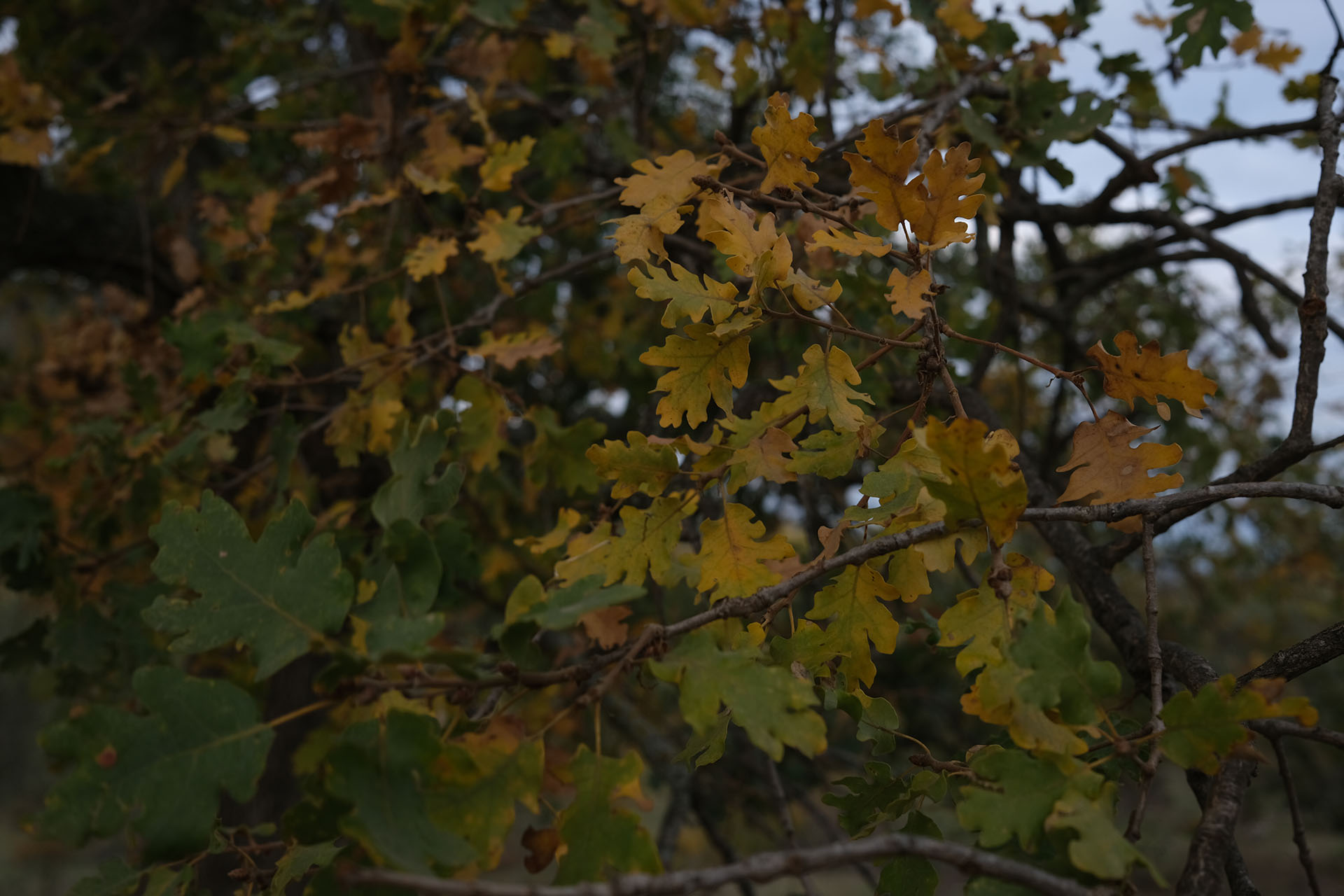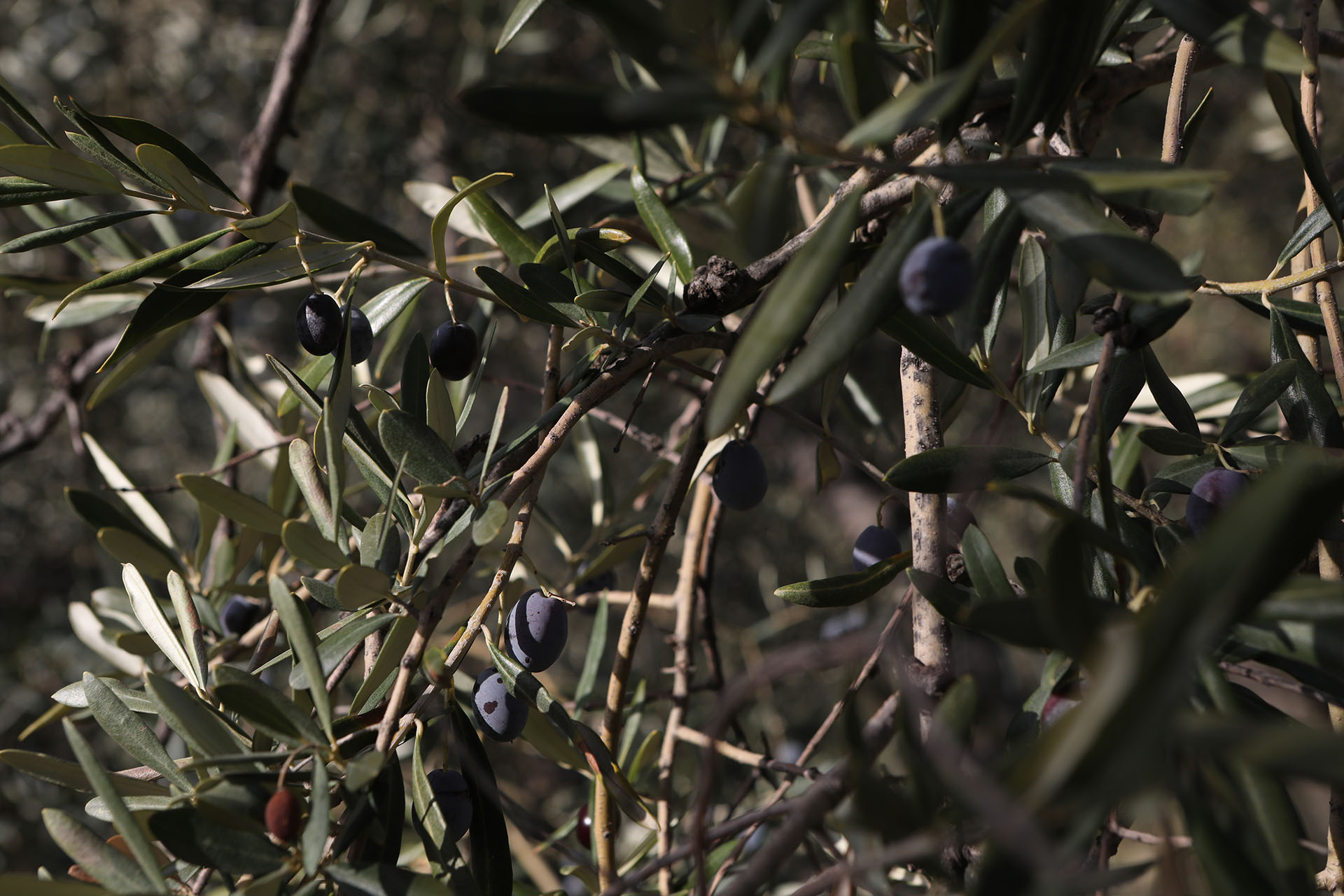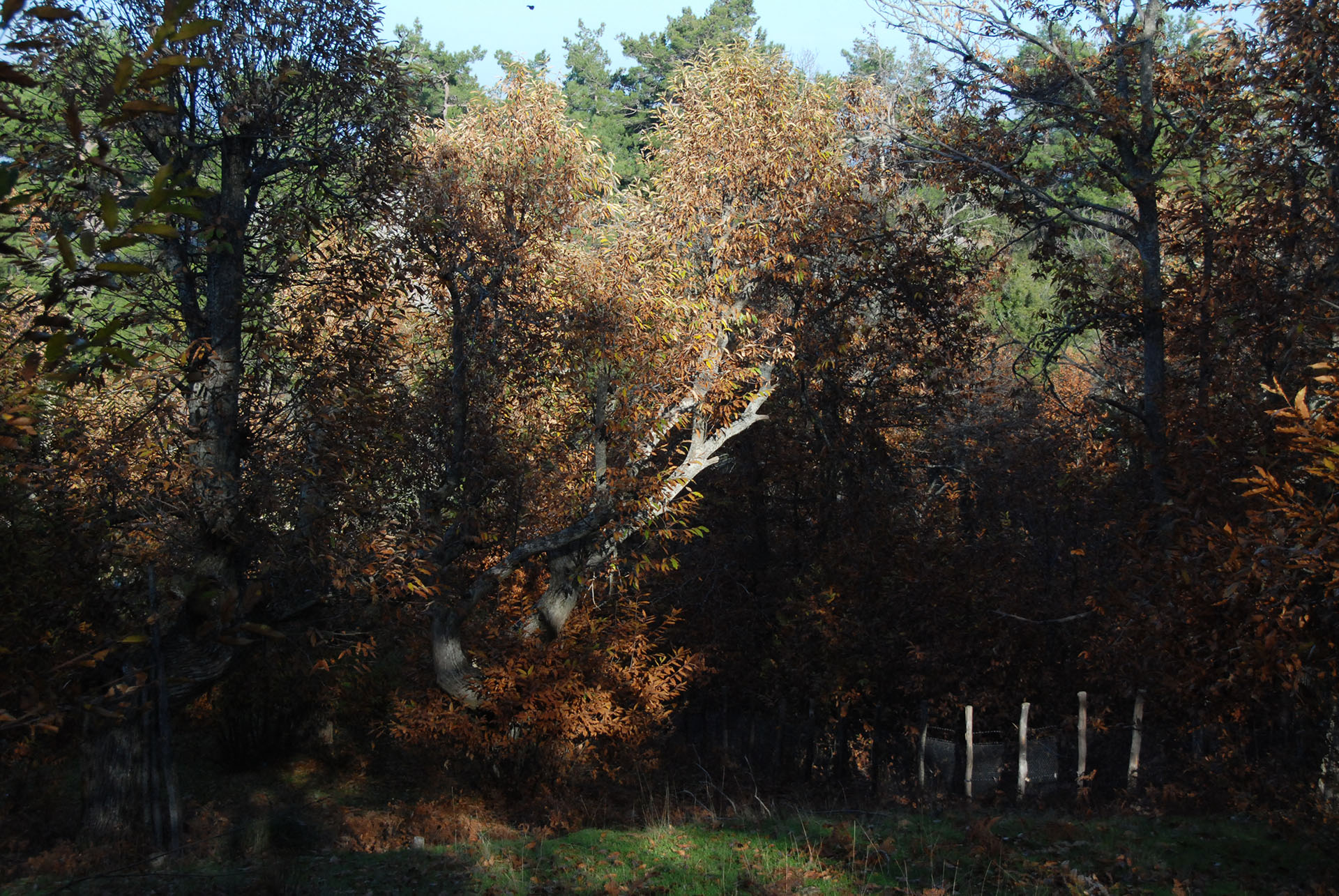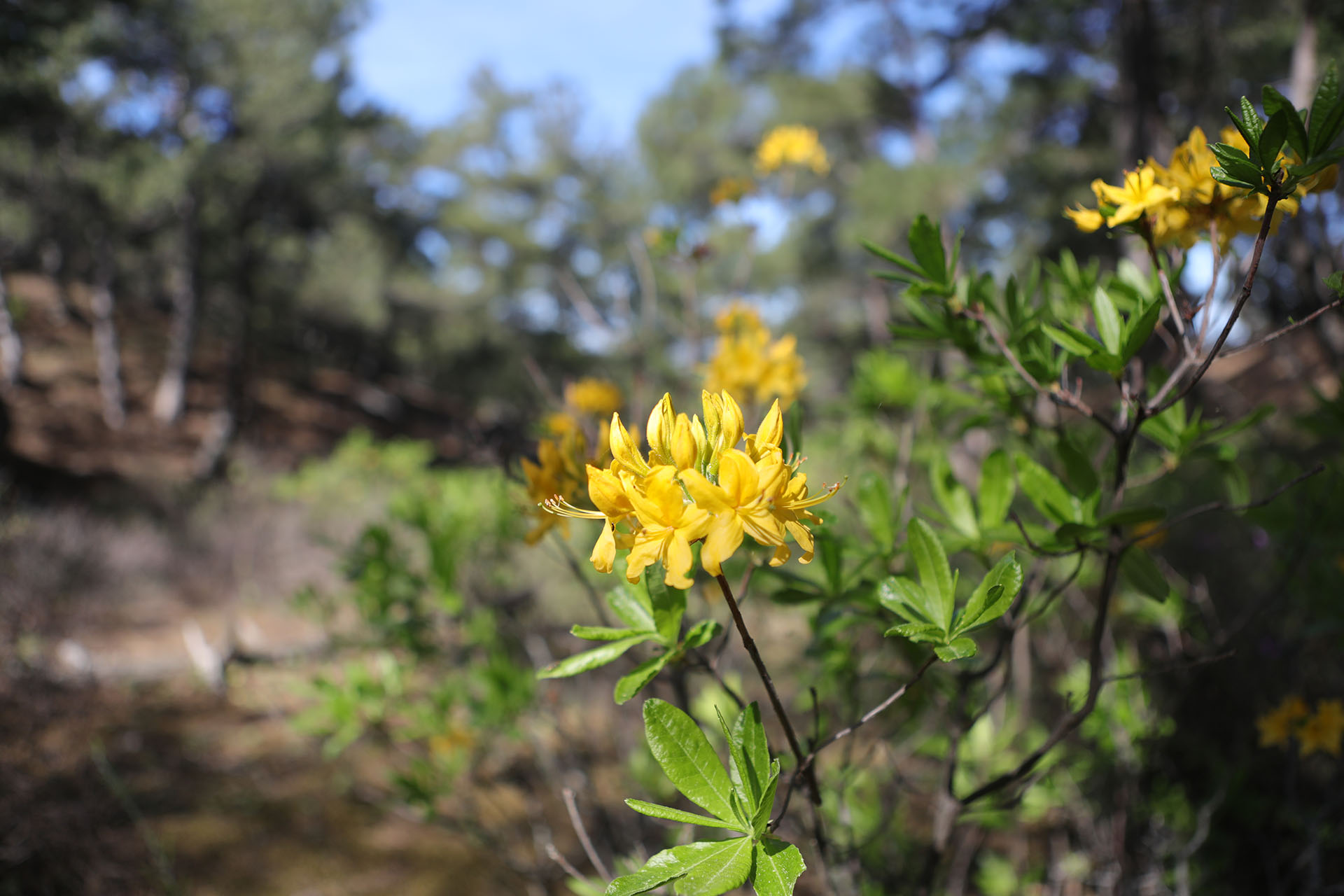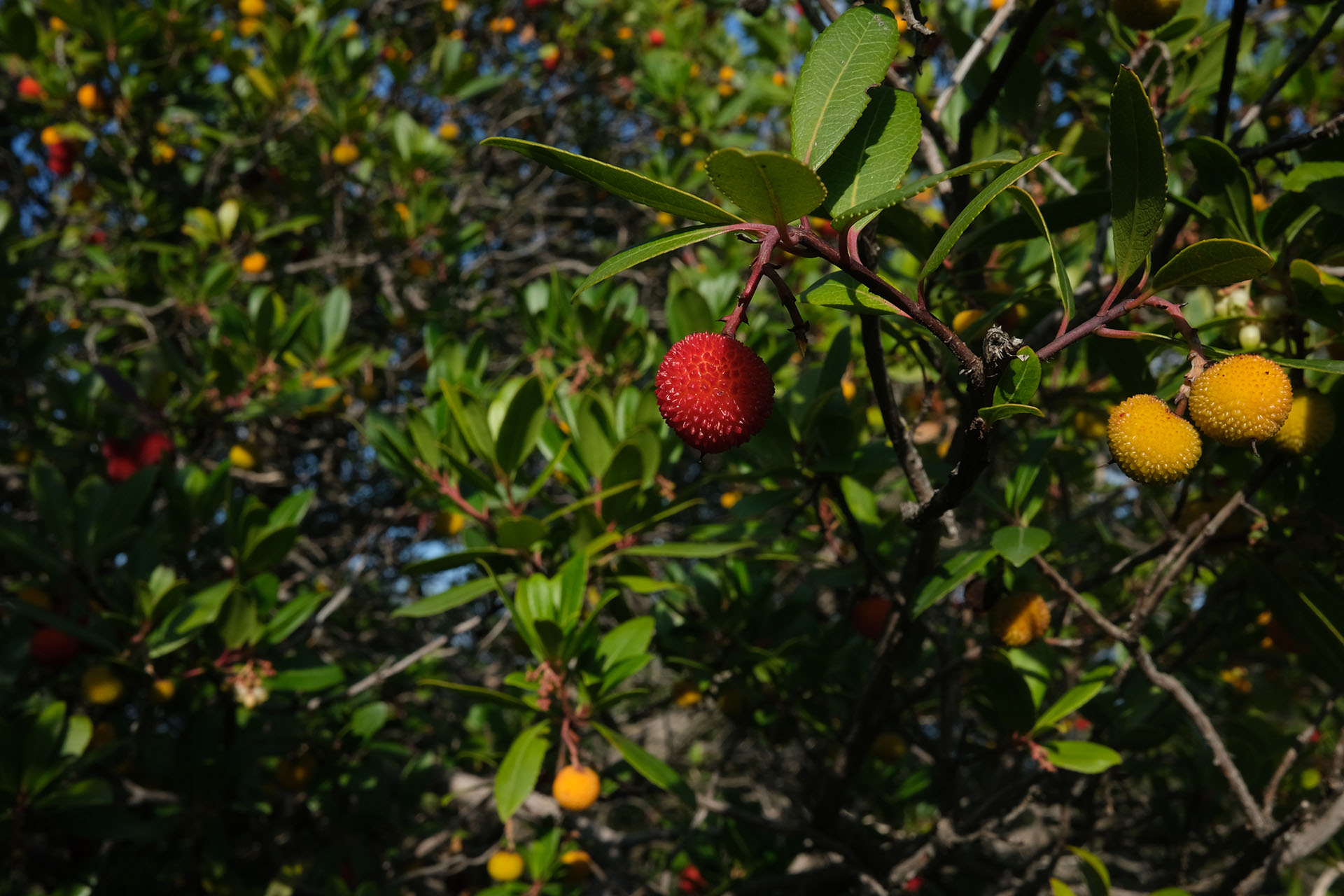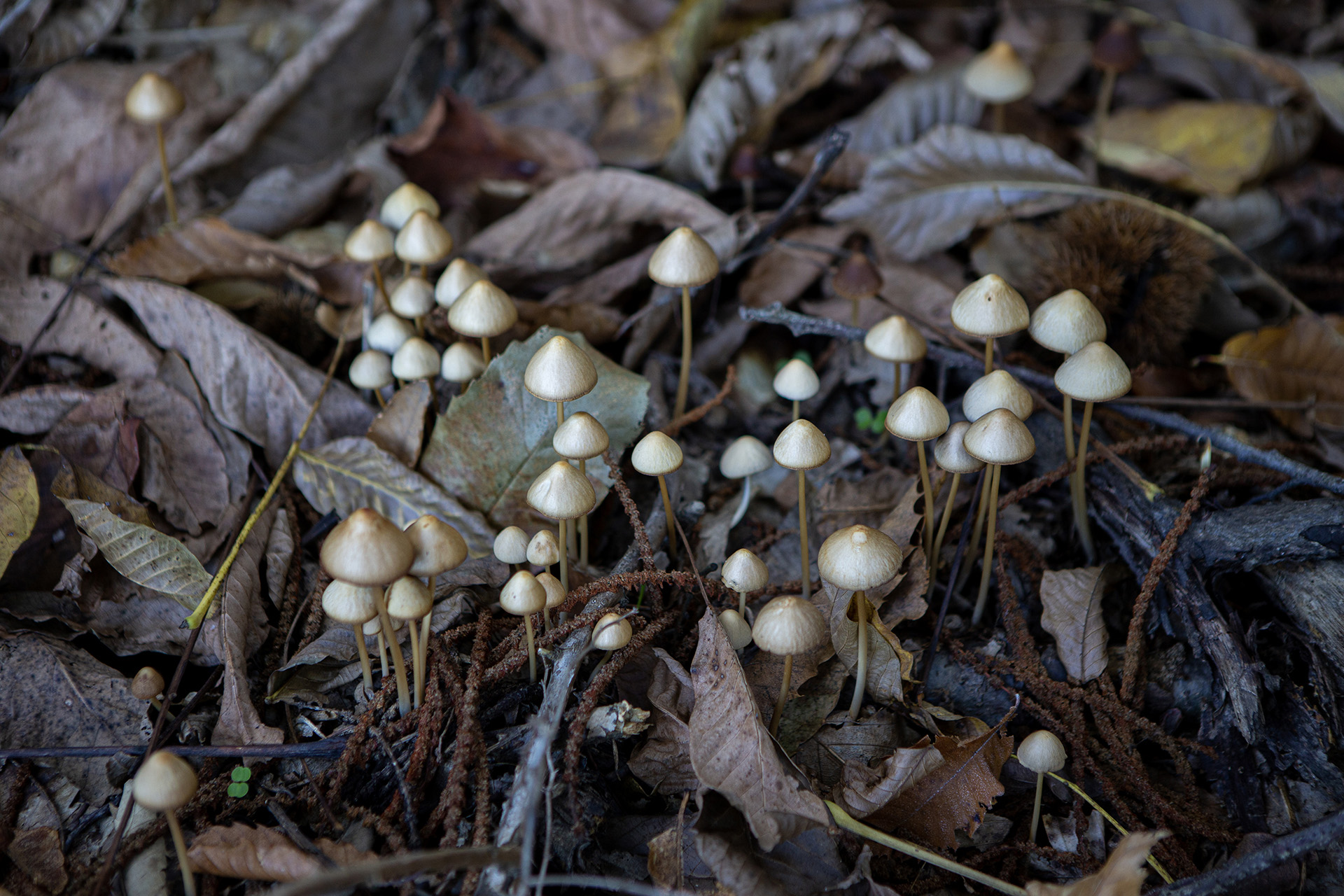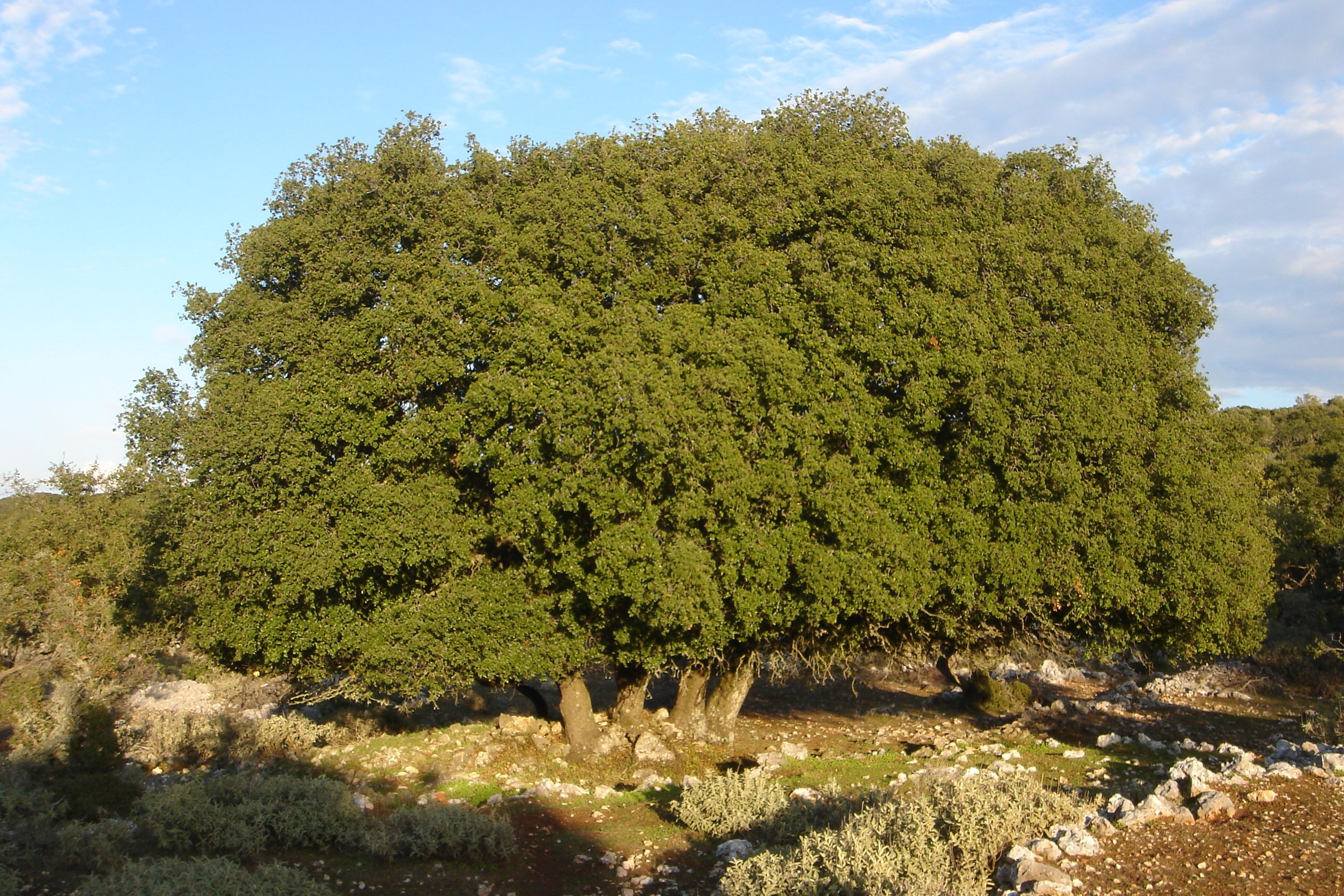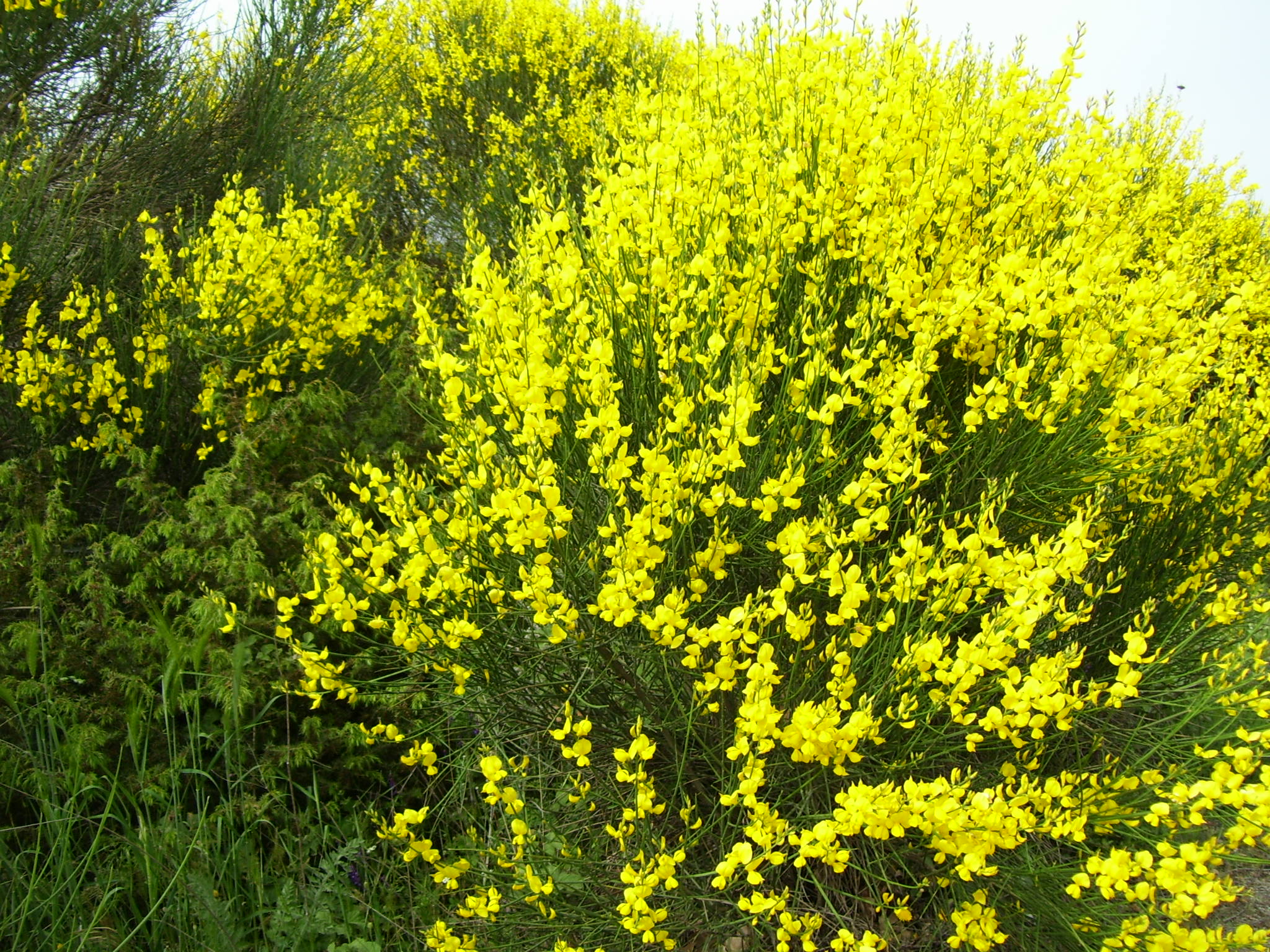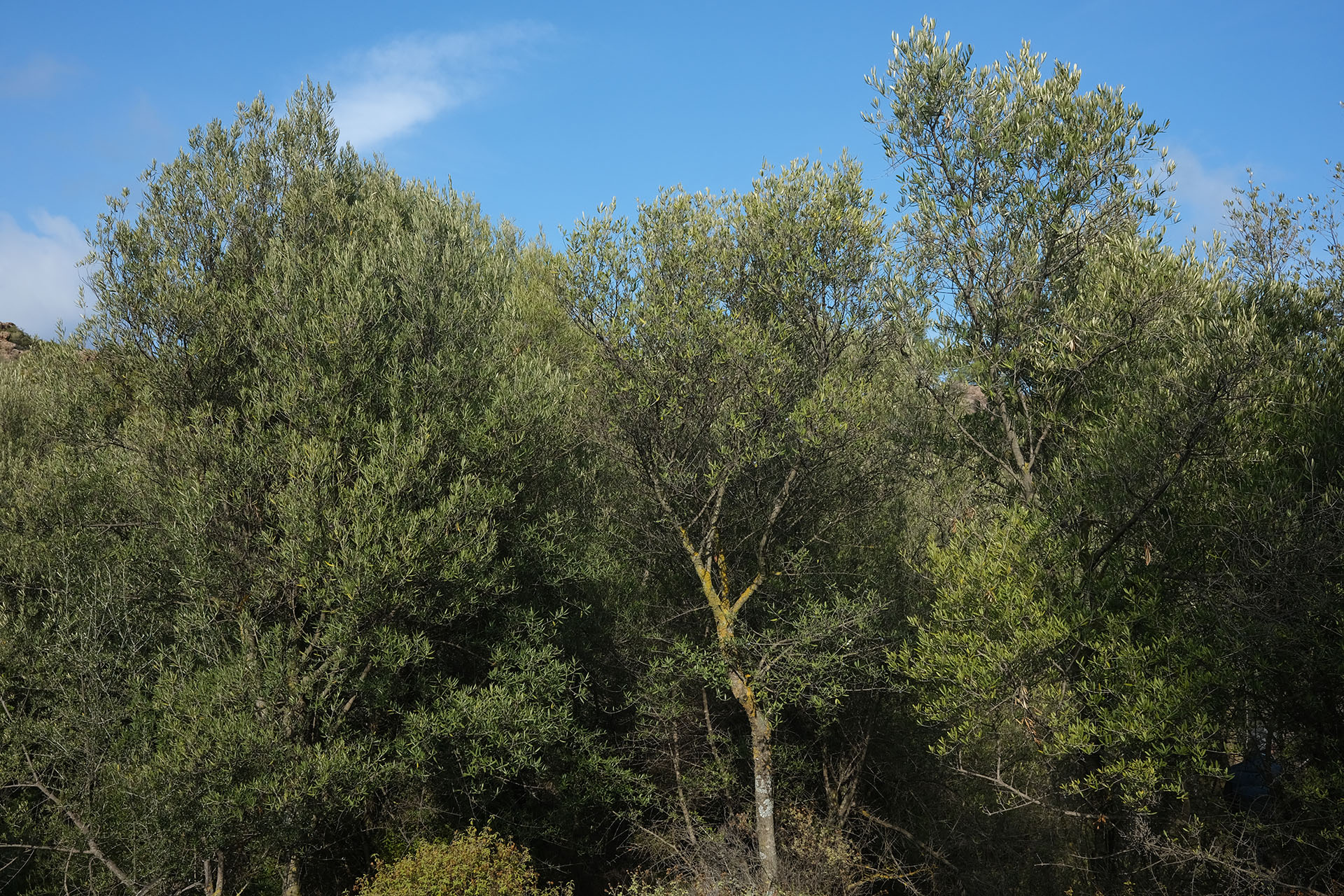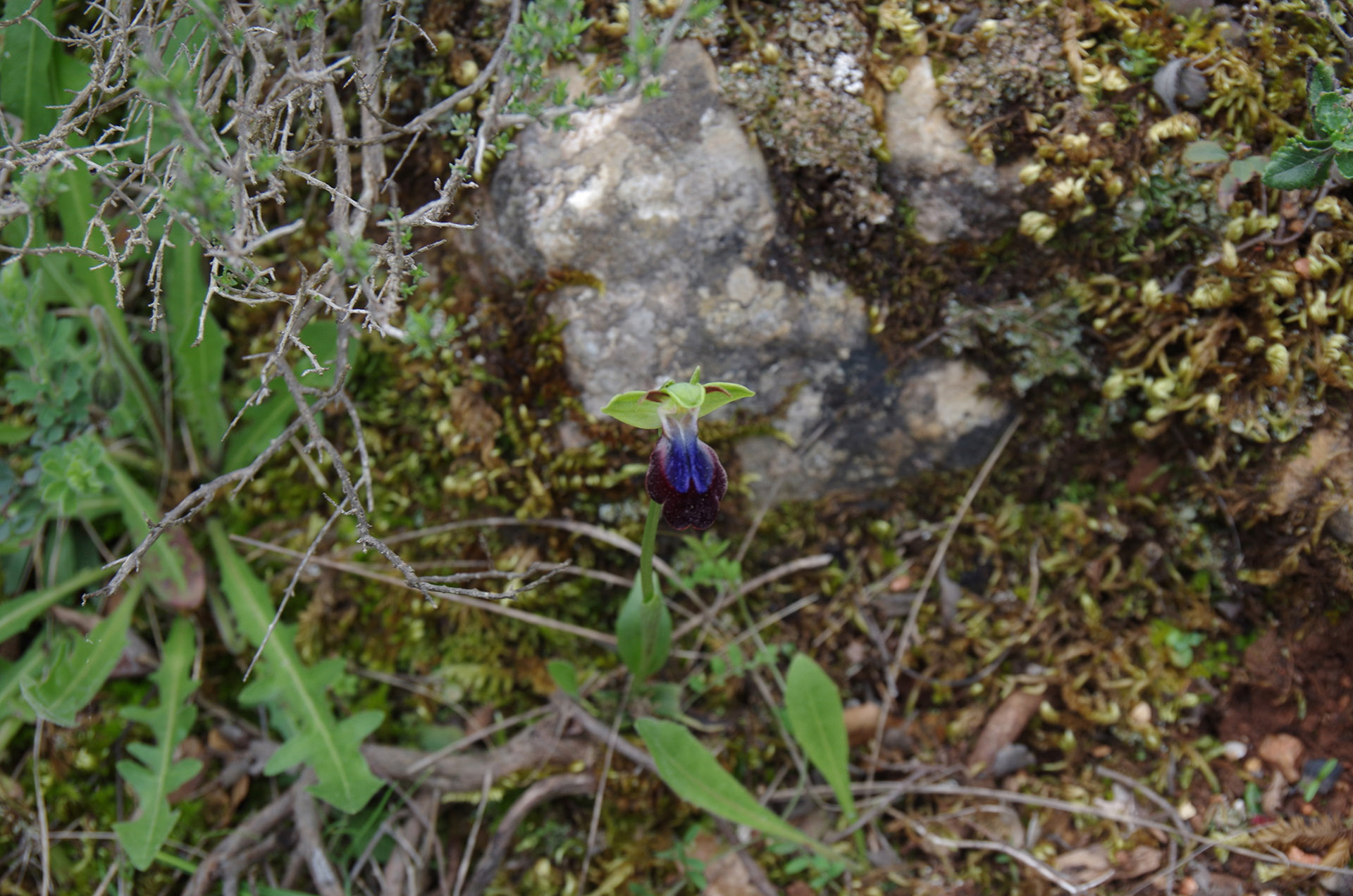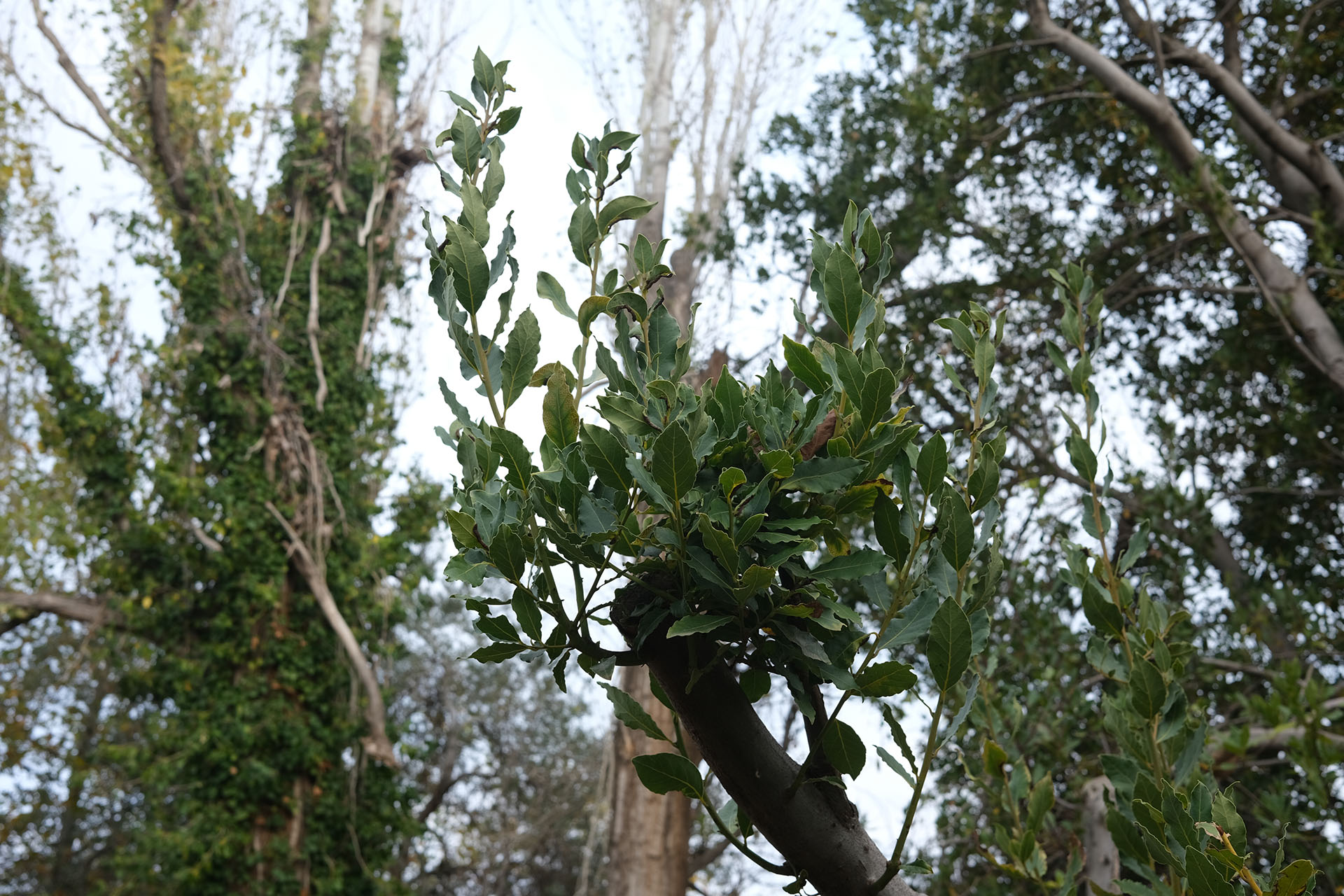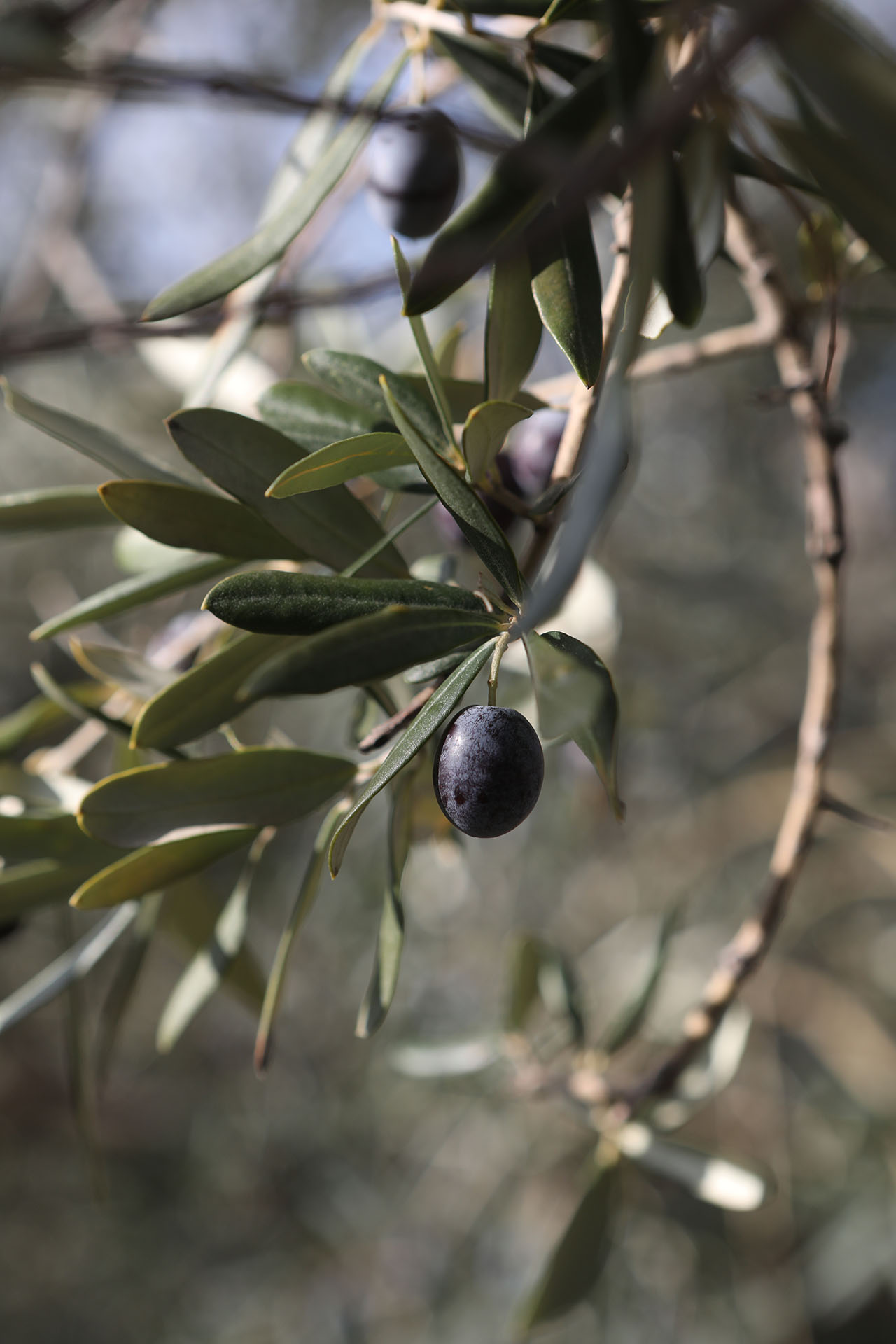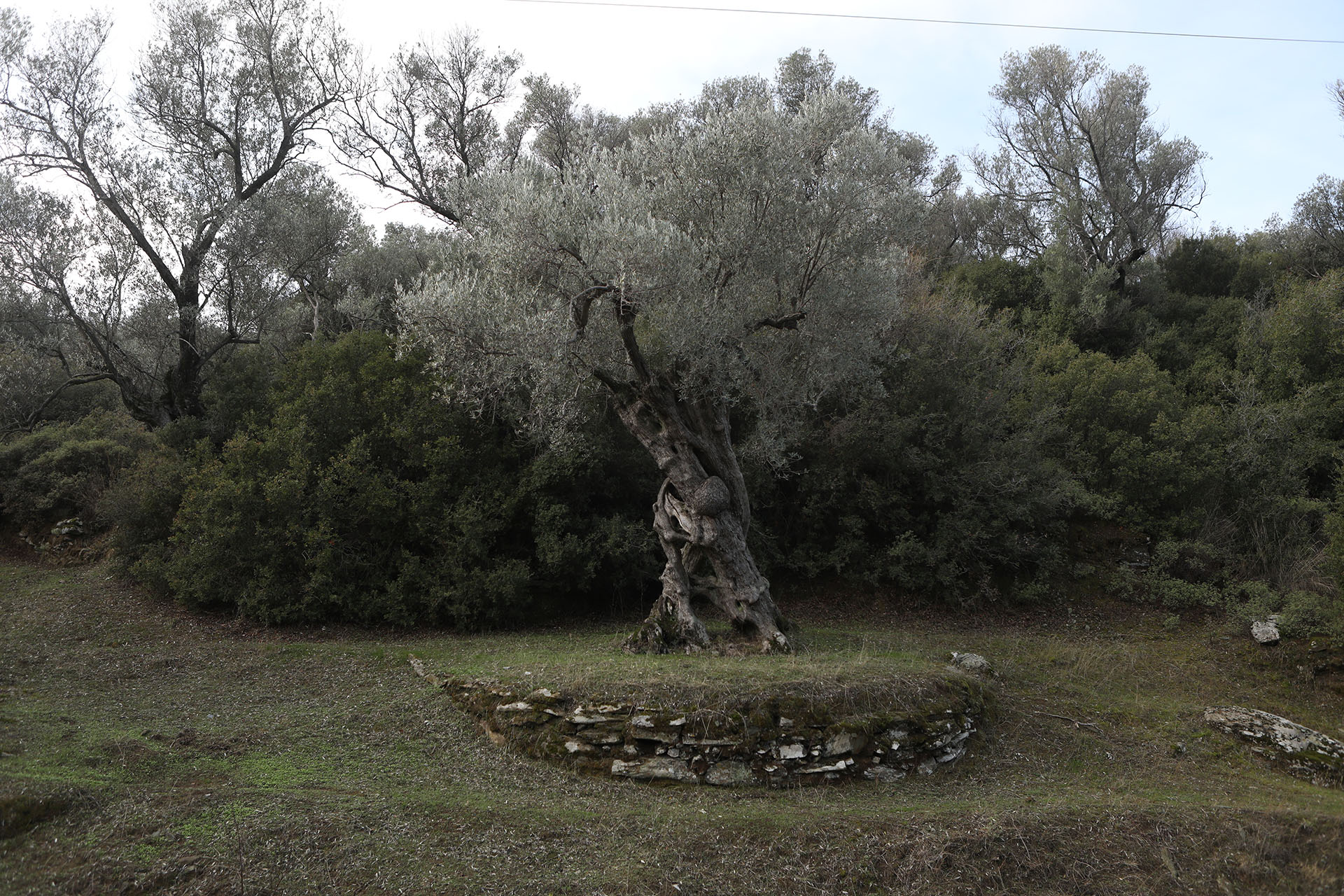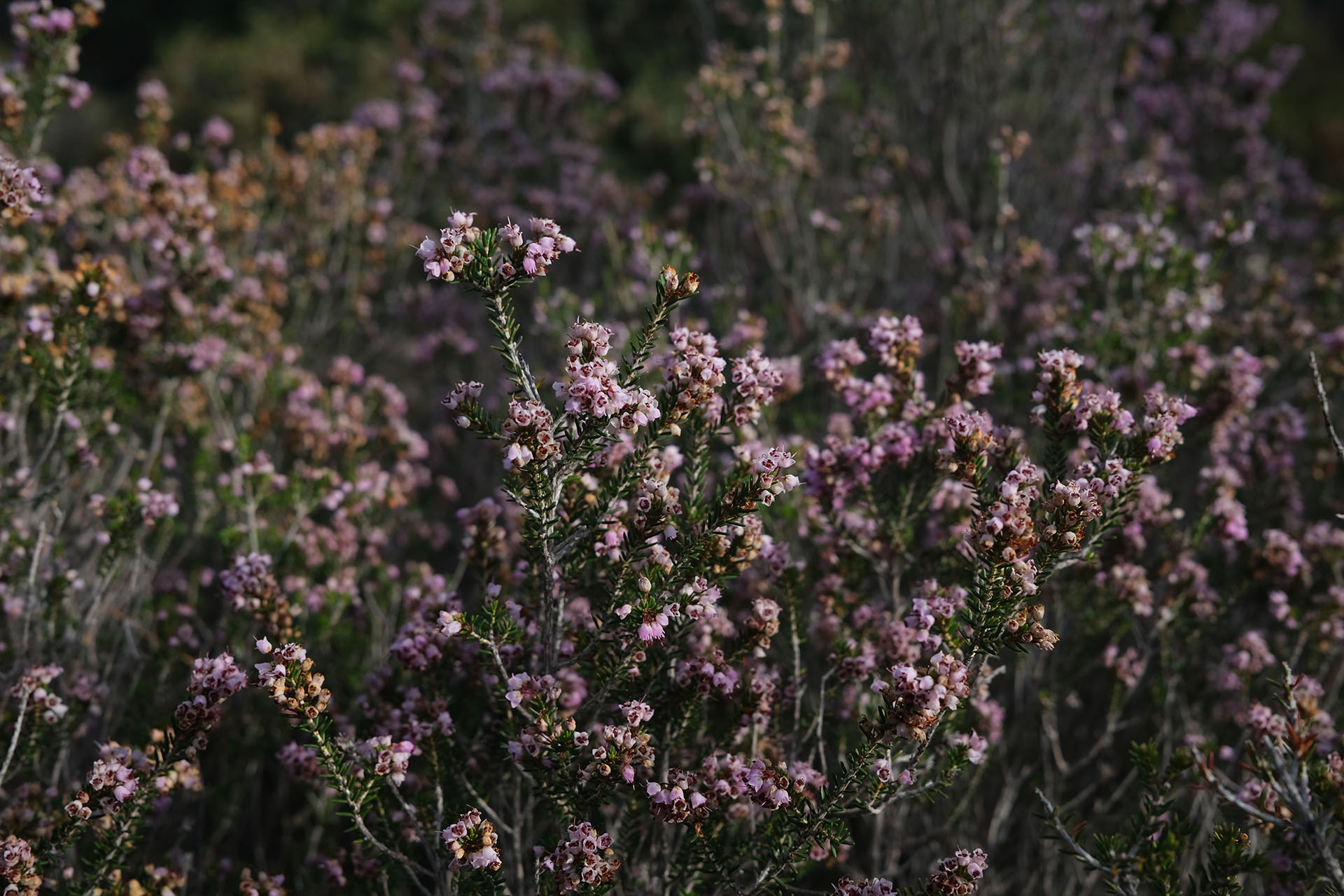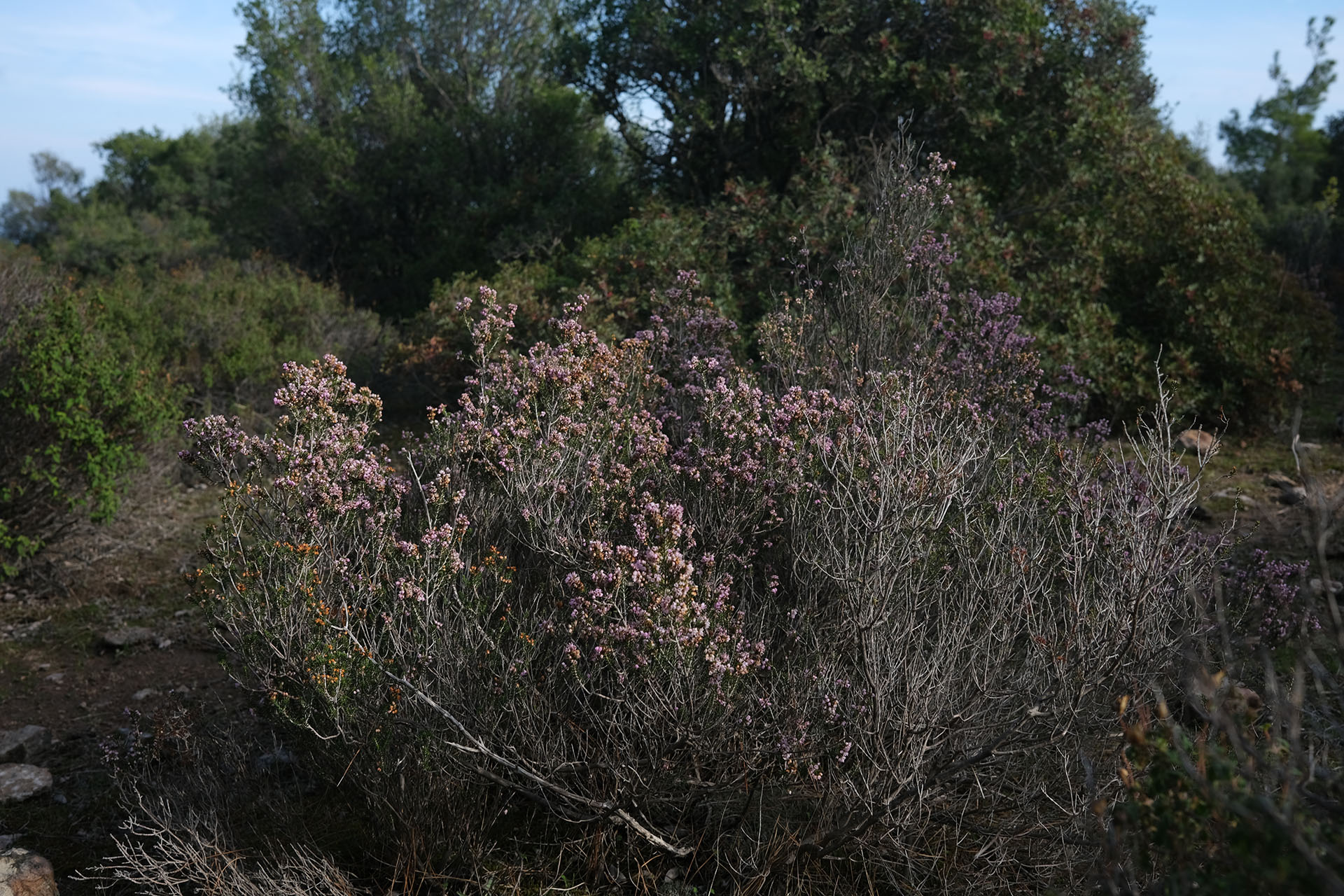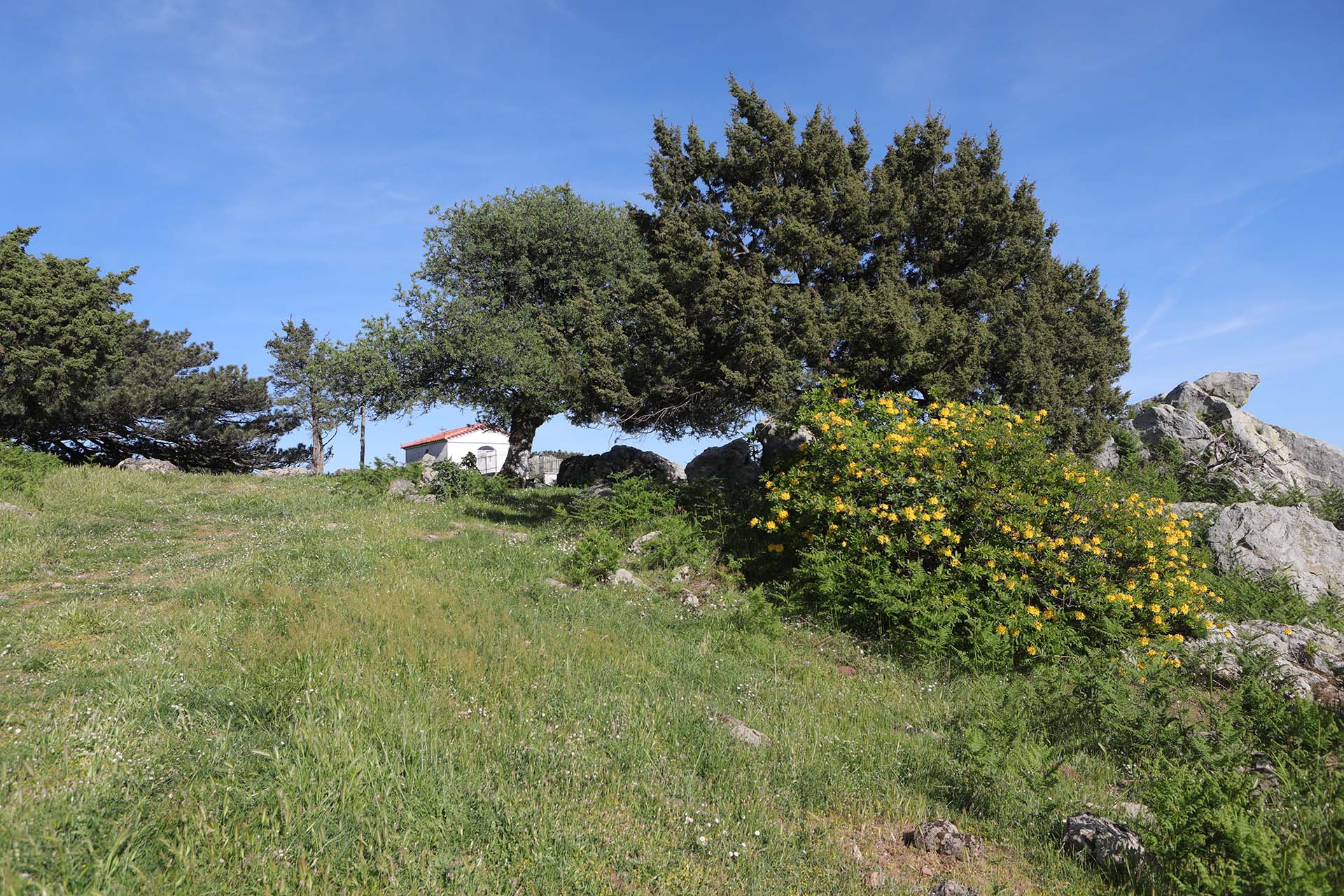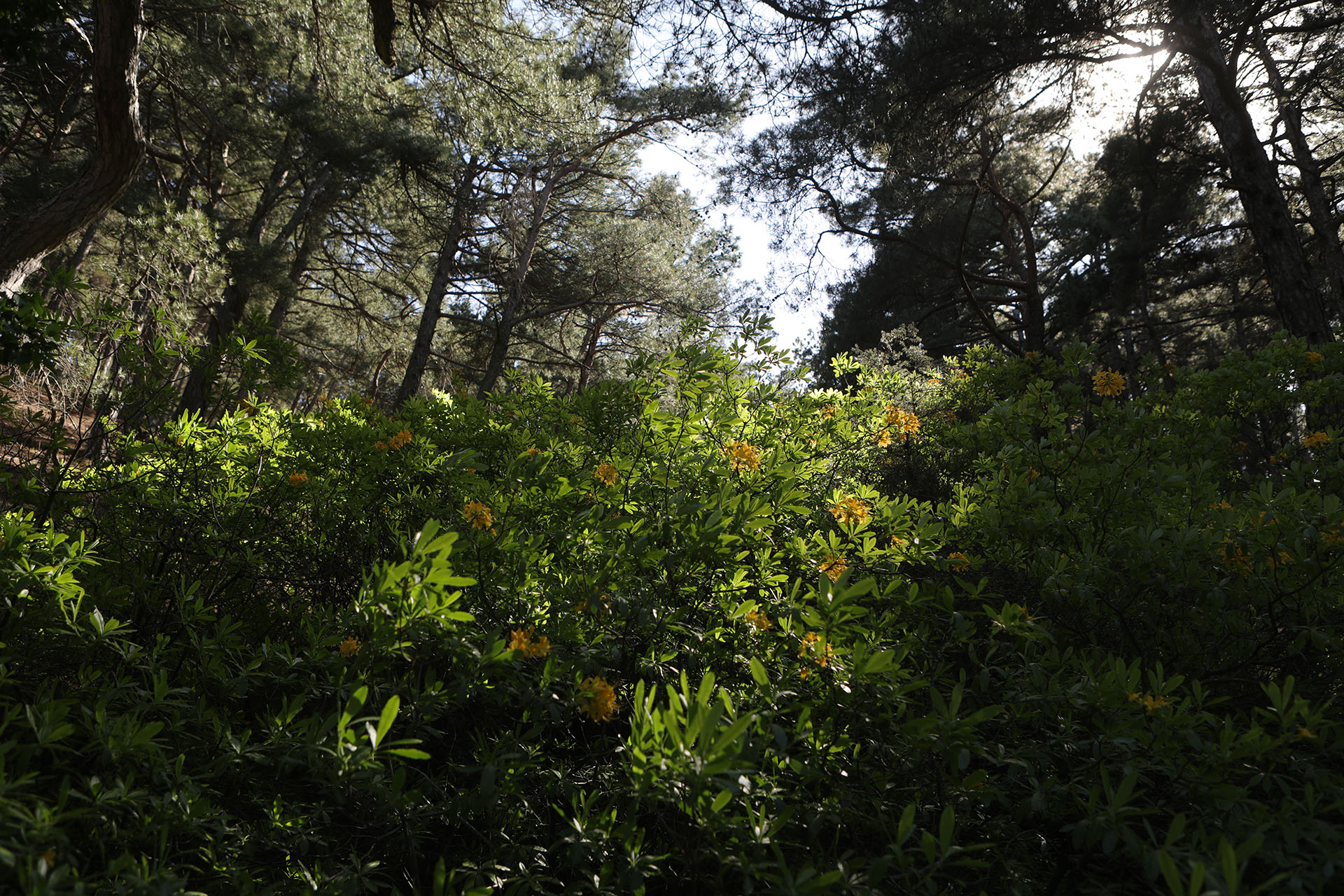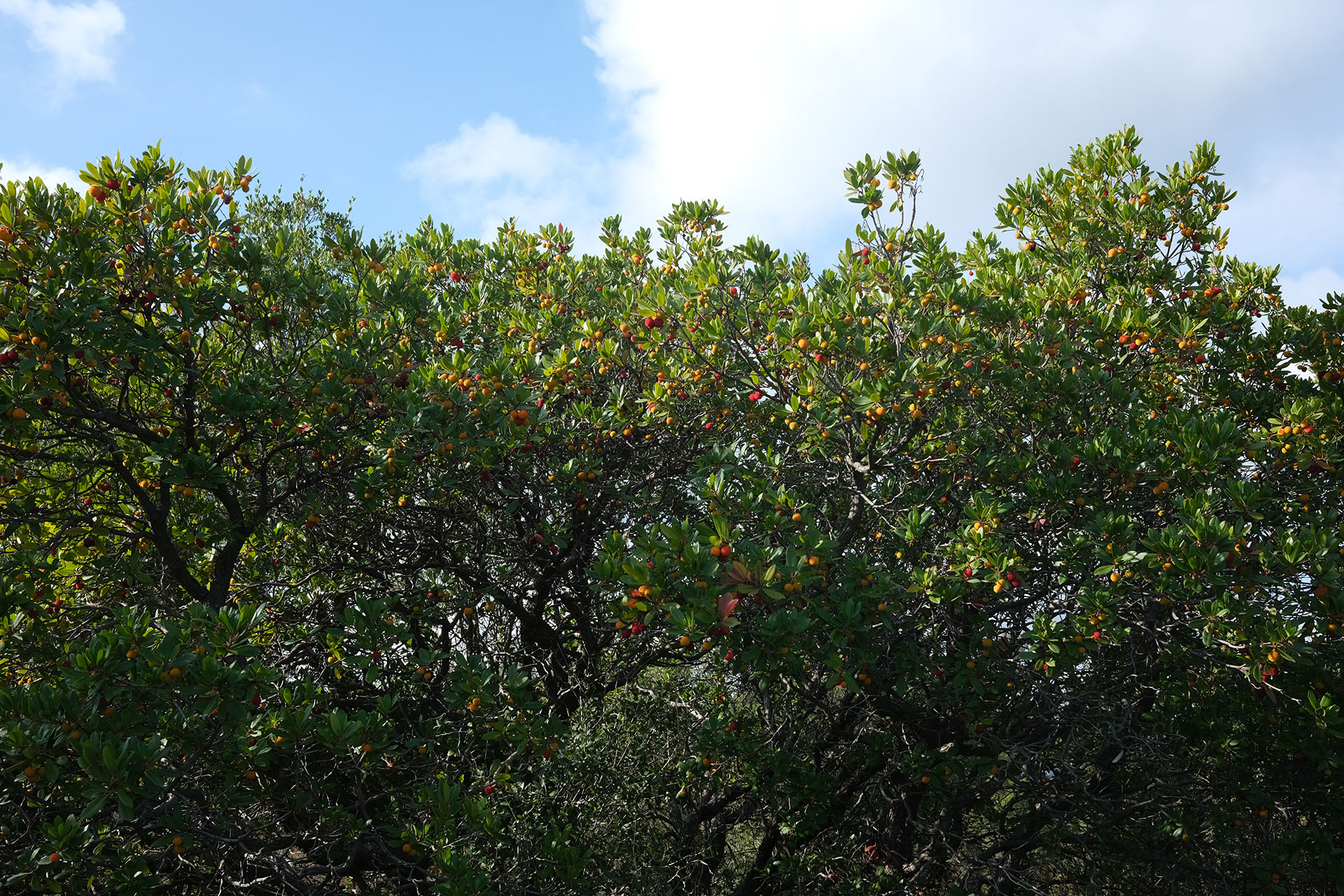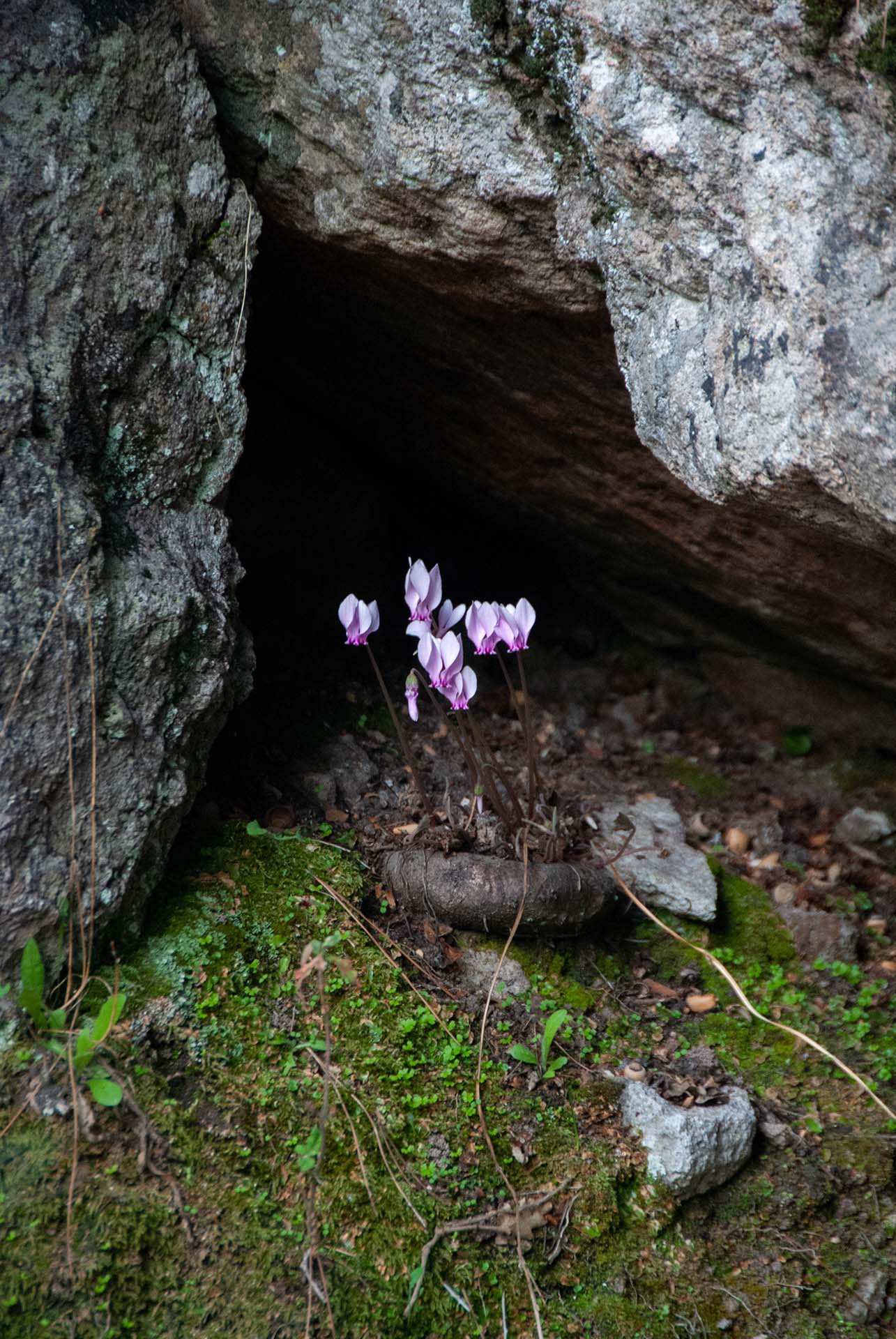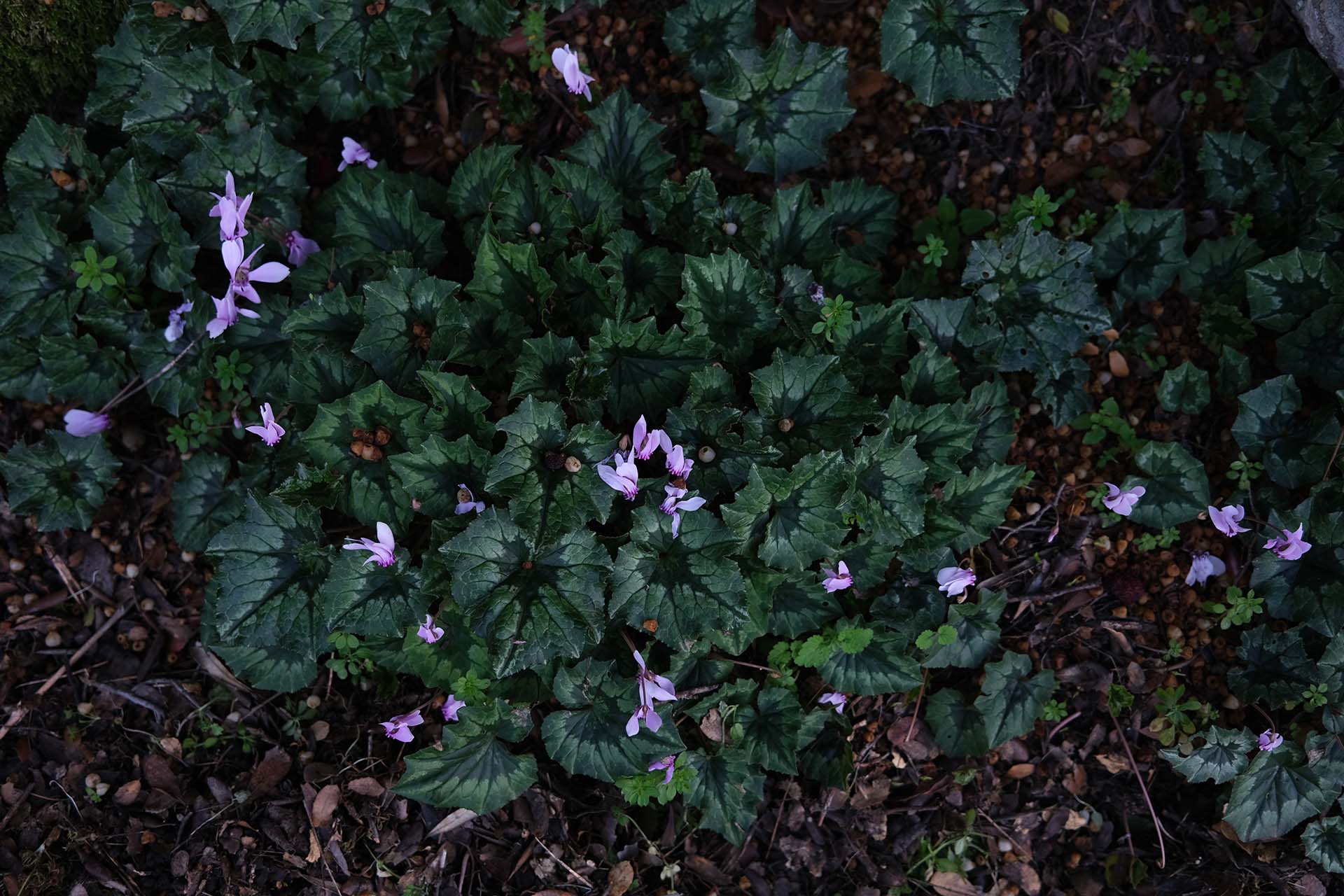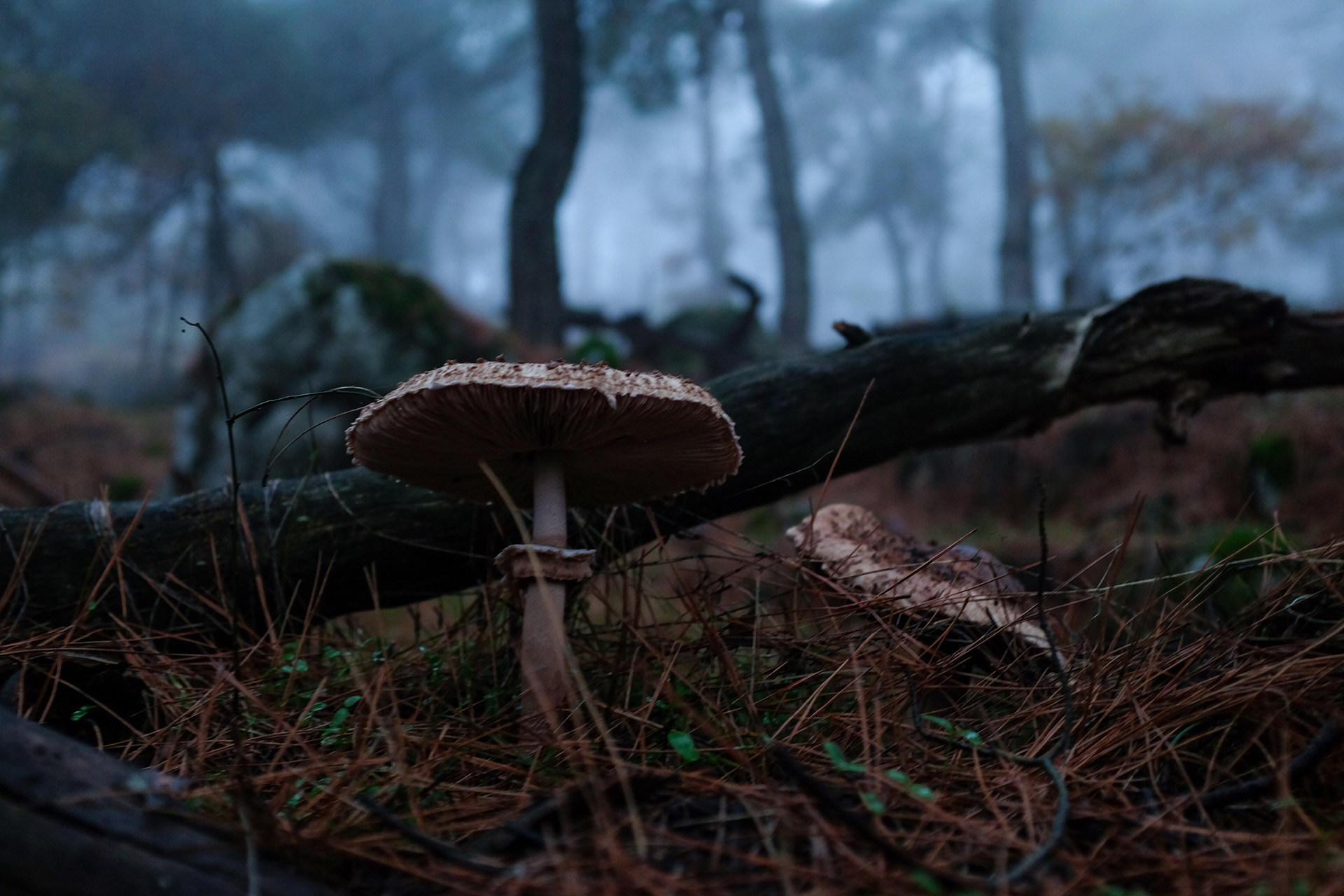The rich flora of the island of Lesvos is the outcome of a multitude of factors, such as the mountainous terrain, the peculiarity and the variety of its minerals, the presence of many wetlands and the favorable climatic conditions prevailing on this island. For all these reasons Lesvos has always been a point of attraction for a great number of botanists, itinerant travelers and scientists. Until this day more than 1,600 taxa (species and subspecies) of higher plants have been recorded in the flora register of Lesvos: aromatic, pharmaceutical, decorative and rare plants, trees and bushes. There are many rare species, hard to find in any other region in Greece. There are many parts in Lesvos that are lush in olive trees and forests with East Mediterranean pines.
The Flora of Lesvos
Δες όλα τα επαγγέλματα
The wild olive (Olea oleaster) is a related species of the domesticated olive tree. This is a long-living perennial brush. It may grow to a big tree or it may remain a small bush. Its olive fruits are of inferior quality and quantity with minimal oil content and much smaller leaves. Its flowers are white-yellow, slightly fragrant and blooms in April and May. It is found throughout the Mediterranean basin and it is popular for its decorative use.
The wild orchids on Lesvos may be found throughout the entire island, especially in its southeastern part, the mountainous masses of Olympus all the way to Plomari and eastwards to the Amali peninsula, to the south of Mytilini. This is due to the geological constitution of the terrain in the eastern parts of Lesvos. Most orchids thrive on limestone terrains in which acidity is basic due to the increased presence of calcium. All Lesvian orchids are geophytes. Once they are developed, these plants have tubers or rhizomes for the storage of reserve nutrients. On Lesvos the rare species Himantoglossum comperianum may be found. Other orchid species include Ophrys lesbis, Ophrys homeri, Ophrys masticorum, Epipactis persica, Platanthera chlorantha, Himantoglossum caprinum, Cephalanthera rubra plus many others (exceeding 90 species).
The Alyssum lesbiacum is a local Lesvian plant. It is found mainly in rocky terrains with open maquis vegetation in dry meadows at altitudes 200-800 m and East Mediterranean pine forests. It usually grows on Mount Olympus, Gera Bay and the Dipi marshland. It blooms from mid-April to mid-May.
Its species name (Lesbiacum) is indicative of its place of origin (from Lesvos) and Alyssum originates from the composite word alyssum (“a-” [alpha privative] denoting absence and –lyssa meaning rabies in Greek), signifying that it helps treat rabies, rage, manias and hydrophobia.
Due to its special terrain and climatic conditions, Lesvos presents a very rich flora helping form the characteristics of its landscape: wild herbs, aromatic, therapeutic and rare plants, shrubs and bushes. According to a recent study approximately 1,580 plant species have been recorded on Lesvos, making this island a point of attraction for many botanical researchers, travelers and scientists. Besides the many rare plant species on Lesvian land, there are many aromatic herbs such as oregano, summer savory, thyme, sage, Greek mountain tea, siderite (sideritis scardica), lavender, mint, marjoram, lemon grass, St John’s wort, etc. which are widely known for their beneficial and therapeutic properties.
Apollo’s laurel (the bay tree) is a common tree in Lesvian flora and it is found predominantly along torrent banks, as it is sustained in the summer by the residual moisture. This is a small perennial tree, growing to a height 3 to 5 m with barks shooting off many branches. The tree’s fruit is blue-black and looks like a small olive. This plant has many properties and uses. Laurel leaves are used in cooking and as a condiment. Its leaves may be used for the extraction of essential oils used in soap production and the food industry.
The pubescent oak is an annual tree, growing to 10 to 20 m tall. Sometimes it does not shed its yellow leaves and keeps them until they are outgrown by new leaves after the winter season.
The southeastern part of Lesvos with its typical maquis shrub land vegetation is dominated by expansive olive tree orchards. This is the most prevalent tree system in Lesvos and presents notable internal variation in terms of altitude, tree age, density and underlying vegetation. The plant variation of the Lesvian olive tree groves is mainly characterized by theropohytic species, such as Anthemis chia, Medicago orbicularis, Lathyrus sp. and many others. The olive tree is a common species in the xerothermic zones of evergreen brushes throughout the entire island. Its cultivation starts from the coasts and may reach as high as 450-500 m (Megalohori-Agiasos-Ambeliko and so on). The olive tree is used as edible fruit tree with pharmaceutical, aromatic and decorative applications. Its excellent quality wood is widely used in furniture, cabinet making and wood carving. Its wood is also used by the locals liberally as firewood and charcoal production. Finally, extracts from the leaves help fight arthritis and rheumatism, while olive tree bark is scraped in the springtime from green twigs in order to prepare an anti-fever concoction.
This is a shrub with limited presence in south Lesvos, the west side of the Gera Bay, the vicinity of Parakoila. It belongs to the species of sclerophyllous perennials. This is a shrub growing up to 5 m tall, with club-like, upright branches and pleasant in odor. It blooms from March to May. It is also used as firewood. The heather is very useful to bee-keeping. Its roots are made into excellent quality smoking pipes.
The chestnut tree forests are mainly located on Mountain Olympus at altitudes exceeding 500 m, the Lepetymnos and western Lesvos, albeit in smaller concentrations. The chestnut forests grow on a variety of substrata and are characterized by an insufficient shrub understory populated by species such as Crataegus monogyna, Prunus cocomilia and Rosa spp. The forest canopy, on the contrary, is sufficient and characterized by the presence of shrub taxa such as Anemone pavonine, Bellis perennis, Cardamine hirsuta, Fritillaria theophrasti, Lapsana communis subsp. Many other protected species participate such as species from the orchidaceae family and some Oriental taxa.
The yellow azalea (Rhododendron Luteum sweet) or yellow rhododendron is a prevalent species on Lesvos, more than any other location in Europe. In particular, this azalea grows among the towns Parakoila, Anemotia, Pterounda, Hidira and Vatousa. This is a rare flowering annual species of an upright bush, growing as tall as 4.5 m with offshoots, beautiful yellow five-part flowers, with a sweet fragrance. The leaves are oblong, grey-green and protruding. Its wood has a white-yellow color. It belongs to the toxic species. The yellow azalea grows almost exclusively in wet and fertile sand-clay soils. The locals use this plant as firewood, while its aromatic flowers are the best floral decoration of the Good Friday Epitaphios liturgical shroud.
The strawberry tree (Arbutus unedo) is an especially resilient perennial plant that is found as a low-lying bush or a small woody tree. Its height may reach up to 12 m. It has leathery deep-green leaves, oblong or ellipsoid with jigsaw edges. Its flowers are white or rose-colored and it blooms late in the fall, at the same time of the maturing of its fruit. In Greece it may be seen throughout the countryside especially in xerothermic zones.
In Lesvos the species Crocus biflorus subsp. Nubigena, a plant of the eastern Aegean region and in western Asia Minor. Its perianth color usually is rose or light purple. The anthers are black, while the style stigmata are yellow or orange. It blooms from February to April and it thrives in dry meadows or at altitudes between 600-1800 m.
On Lesvos both common and widespread Greek cyclamens grow: Cyclamen graecum and Cyclamen hederifolium. Both cyclamens have a light rosy color but differ in the shape of the leaves: the Cyclamen graecum are heart-shaped while the Cyclamen hederifolium has pentagonal leaves. Both bloom in the fall. They may be found in shady forests and brush land locations, in gullies and ravines.
Rockrose (“ladaniá”) is a self-growing low, phrygana bush that thrives in many parts in Greece, Crete and Cyprus. It grows among olive trees and in burnt forests. In Lesvos it is seen in the Amali vicinity. The blossoming period starts in March and ends in June. Its leaves and shoots secrete a resinous liquid in the summer months, known as “aladanos” or “ladano”. Ladano has anti-inflammatory, anti-diarrhea, anti-seizure, expectorant and anticatarrh properties.
Lesvos is characterized by a variety of ecosystems and vegetation. This variety combined with its mild climate seems to favor the development of many forms of fungal flora. On Lesvos the famous Lactarius genus mushrooms as well as the typical white mushrooms flourish along with “sphoungarites” (sponge-like) mushrooms as they grow beneath pines trees and are savored by many consumers. After the first autumn rains, one can see Laetiporus sulfureus and Fistulina hepatica mushrooms grow on chestnut or oak tree trunks. A little later in the year the annual tree forest floor is full of small and big mushrooms of the Amanita and the Boletus genus. Many uniquely Lesvian mushroom species grow in the island’s olive tree orchards which cover a great expanse on all plains, slopes and ravines. Thus, mushrooms are an inseparable element in the Lesvian ecosystem. More than 150 mushroom species have been identified so far.
The black pine forests are sparse and may only be found in only two regions of Lesvos, namely, Western Lesvos, on Profitis Ilias Mountain and in the southeastern part of Lesvos between Agiasos and Megalohori on Psilokoudouno Mountain, a part of the Olympus mountain range. The understory in black pine forests is relatively poor in both coverage rate and number of species. Many species are part of this understory with prevalence of Jupinerus oxycedrus, bracken (Pteridium aquilinum) and herbaceous species such as Aira elegantissima, Crucianella latifolia, Luzula nodulosa, Trifolium campestre and many others. It should be emphasized that Rhododendron luteum is part of the understory of the black pine forests close to the Profitis Ilias Mount summit.
The Lesvian paeonia (Paeonia mascula ssp mascula) thrives on all Eastern Aegean Islands (Lesvos, Chios, Samos) and on Mountain Elikon, while it has a wide distribution in the south and east Mediterranean Sea. The blossoming period lasts through spring time. It grows in open fir and chestnut forests and in ravines at altitudes between 400 and 1200 m.
The nerium oleander is found usually next to rivers and torrents throughout the island but also on the side of roads. It is a perennial bush, with pharmaceutical applications and it is extremely toxic. Its flowers are yellow, pink, white with five petals and false end umbels.
The kermes oak is found in Lesvos anywhere on the island in all terrains, from the shore zone to high up on the mountains. It thrives anywhere but it causes problems with certain farming crops. This plant is usually a perennial bush with dense foliage and branches
Rush broom (“sparto”) is found throughout the entire island, especially in coastal zones and sometimes further inland for example, Vatousa and Antissa. This is a shrub, 1 to 4 m tall with many upright, green and lean branches. Its flowers are yellow and very aromatic. Its black spores are clustered in lobes. This plant blooms between April and July.
This is an aromatic plant, with pharmaceutical applications; it is bee-friendly, used in fiber crops, and decorative uses. The flower extract contains essential oils of an exquisite quality, suitable for cosmetics production. Its shoots have cardio-stimulant properties. However, excessive consumption by animals may cause them severe intoxication. It also has anti-diabetic, diuretic, laxative, menstrual stimulant and anti-proteinuric properties. The spores are poisonous.
The East Mediterranean pine is the common forest tree species in Lesvos. It may be seen in expansive areas in the central and southern parts of Lesvos, in the mountainous regions of western Lesvos between Parakoila, Vatousa, Pterounda and Hidira, in the peninsula of Amali and in more sparse concentrations in eastern and northern Lesvos. The tree understory is varied depending on the geological substratum. For example, in schist-rock areas the understory is denser helping the growth of various shrub species such as Arbutus unedo, A. andrachne, Jupinerus oxycedrus subsp. Oxycedrus, Phillyrea latifolia etc. The understory is less dense and deficient in ophiolithic terrains regarding the variety of species. Usually this understory is populated with phrygana species, such as Cistus criticus, Erica manipuliflora, Teucrium capitatum, Sarcopoterium spinosum and many herbaceous plants. The ophiolitihc terrains present also the locally endemic species Alyssum lesbiacum, Centaurea reuterana, Genista anatolica, and Thlaspi ochroleucum.


